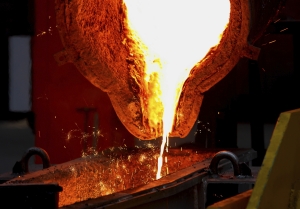What can we design for you today? Talk to a building specialist to learn more. 1-888-449-7756
The Four Main Types of Steel

With any material, there’s always a variation in type, form and function that make each version slightly different not only in how it’s made but also how it’s used. The same is true for steel – as well as most metals. There are four main types of steel that are classified a few different ways based on their chemical makeup.
These types are carbon steel, alloy steel, stainless steel and tool steel. Each type has slightly different properties, purposes and best uses and it’s important to know that usually in construction, alloy and carbon steel are typically used.
Carbon steel is named that because of the amount of carbon in it’s chemical makeup. Depending on the amount (0.04% up to 1.5%), the steel begins to become less pliable, with lower amounts can serve to be used in a variety of forms and shapes, while steel with higher amounts are extremely strong for use almost anywhere.
Alloy steel boasts 1 to 2 elements besides carbon, or multiple metals that come together with iron to create it. Because of their cost, being widely available and the fact that it’s easier to process and change than carbon steels, alloy steels are extremely common in all kinds of structures and uses. It responds well to heat and other types of mechanical manipulation. This type of steel is further broken down into low and high-alloy classifications depending on the types of metals that are present; and is a strong, high quality material.
Stainless steel is extremely strong and resistant to corrosion and other damages due to it’s makeup of other alloying materials that work in conjunction with iron to create a strong and sleek material. This combination allows the material to be easily manipulated, molded, shaped and otherwise used in a wide variety of items. From cookware, to medical tools, to appliances, the amount of items that use this strong material are endless.
Tool steel is likely the strongest type, and is perfect for high impact purposes due to its extreme hardness and aversion to most types of abrasion and resistance to hard surface. As implied by the name, this type of steel is perfect for creating tools to be used on most materials, including other types of steel and other metals. This type of steel is best suited for tools involving cutting, molds or impact purposed like hammers. Because this is a material that isn’t deformed or affected by the impact of other objects, it’s easy to see why it’s the most appropriate material for tools.
Prefab steel structures tend to be alloy, carbon or construction grade steel, able to create the custom designs and frames required for buildings, but strong enough to last for decades. It’s important to know the types of steels and metals that exist in order to understand what separates one product from another.
©2009-2024 King David Interactive Corp. All Rights Reserved. | CALL TO SAVE NOW! 1-888-449-7756